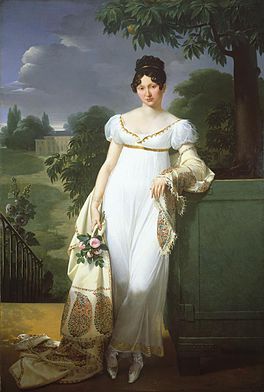A.M Cassandre
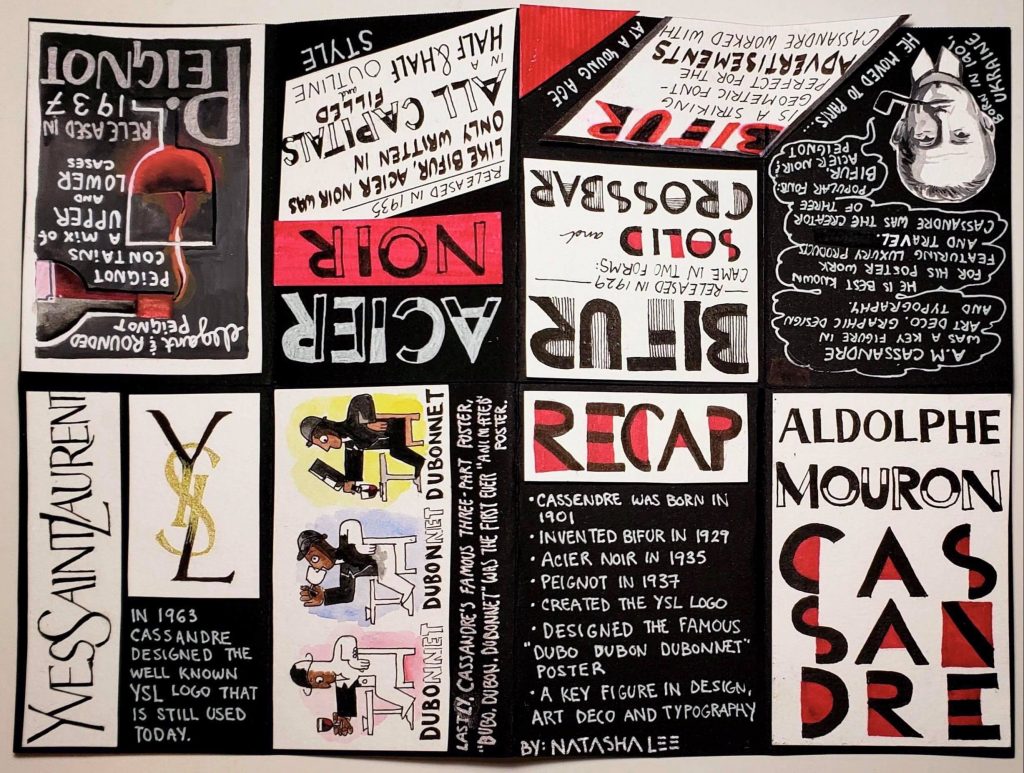
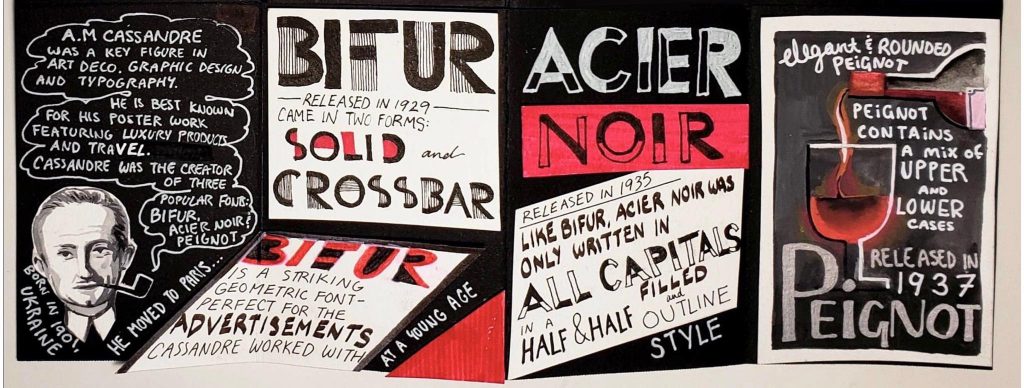
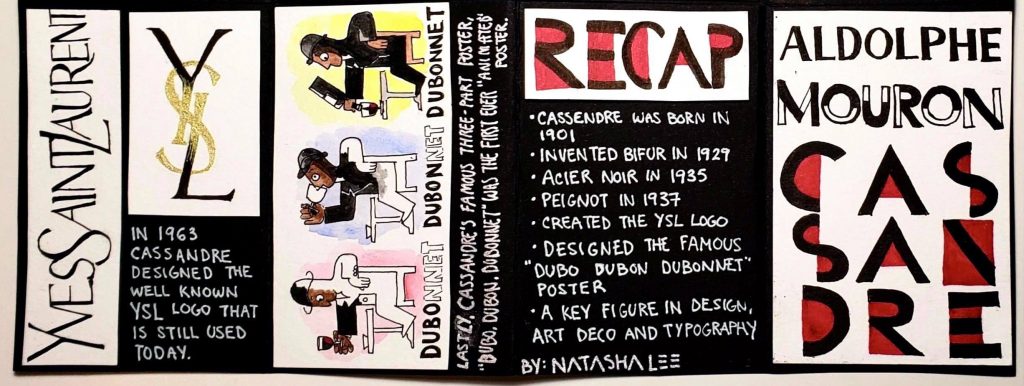

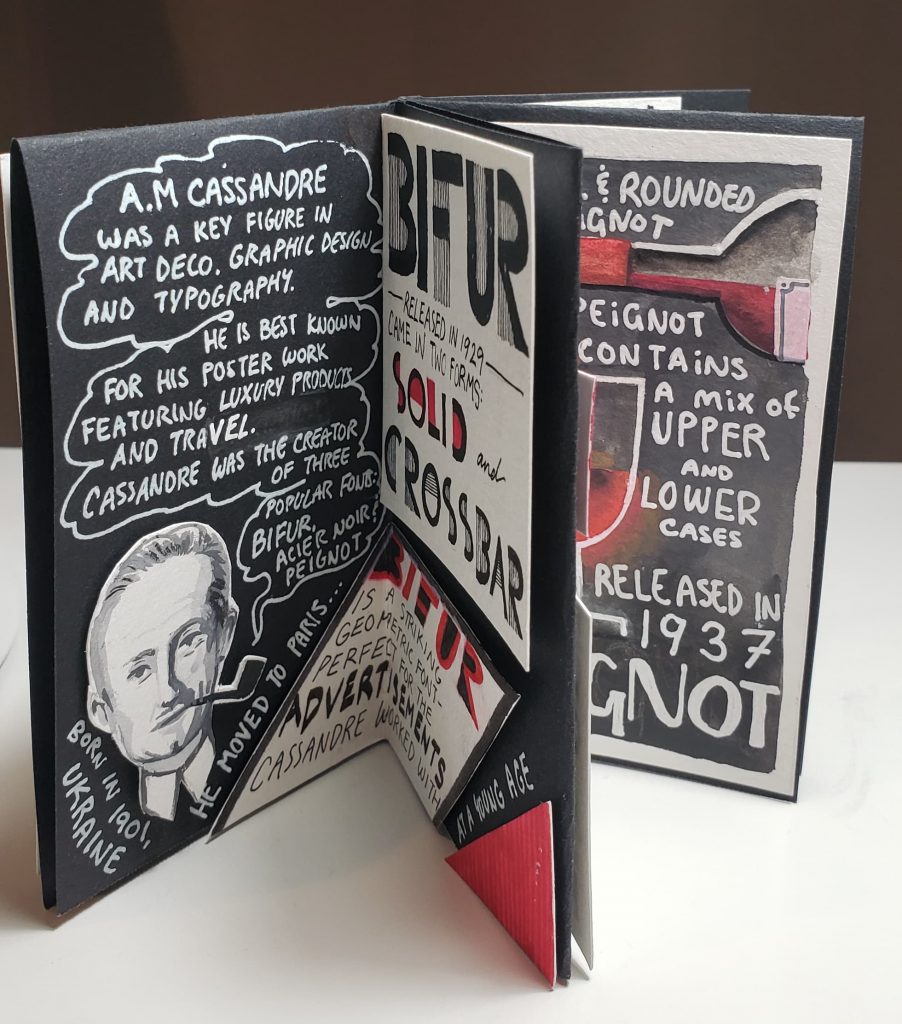
I found this zine project very fun and an exciting challenge to create. I chose to feature A.M Cassandre as the subject of my zine and got to learn a lot about his typography and poster work through my research. While I found much more information on his graphic design and poster work than on his typography, it was still interesting to learn about how he combined these two skills to create fantastic advertisements.
One difficulty I found when creating my zine was fitting all the information I wanted to include onto a small page! I was able to find many interesting facts and stories about Cassandre, but when it came time to transfer my research onto the zine, I realized that I had to pair down the information to the bare points. While I could have cut down on the illustrations and large lettering, I tried to prioritize readability and visual intrigue over bombarding my zine with text. I chose to create a cohesive theme for my zine by sticking to a limited colour palette of black, white, silver, and red for the majority of the text. These were colours used often in Cassandre’s typography work, so it seemed fitting to create my zine using such colours as well.
For this project, I would give myself an 8/10. I am quite pleased with the graphic and bold style of my zine that reflects Cassandre’s work and incorporates examples of his work outside of just typography. I spent a lot of time ensuring that the flow of the information made sense and that it was captivating and fun to read. In retrospect, I wish I was able to incorporate even more information on his work and typography by making the size of my zine bigger. This way, I could have added more facts and given the reader an even better idea and appreciation of Cassandre’s work.
Fun fact: Everything in my zine was hand drawn or written! Nothing against printers- I just wanted to torture myself and give everything a cohesive hand made quality.
Websites used for research:
https://www.cassandre-france.com/about-am-cassandre
https://www.printmag.com/post/bifur-cassandre-typeface
https://www.artyfactory.com/graphic_design/graphic_designers/cassandre.htm




